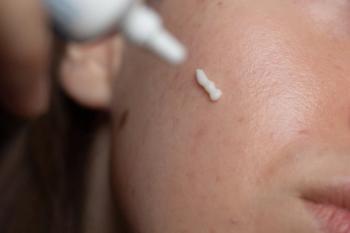
Amy Spizuoco, DO, FAOCD: Trichoscopy Improves Precision and Efficiency in Alopecia Diagnosis
Key Takeaways
- Trichoscopy significantly improves diagnostic accuracy in hair loss by identifying patterns in scarring and non-scarring alopecia, reducing biopsy necessity.
- The tool is efficient, cost-effective, and accessible, making it a valuable addition to clinical practice for hair loss evaluation.
Amy Spizuoco, DO, FAOCD, shared how trichoscopy enhances alopecia evaluation by improving diagnostic speed, accuracy, and reducing biopsy need.
At the 2025 Society of Dermatology Physician Associates (SDPA) Annual Summer Dermatology Conference in Washington, DC, Amy Spizuoco, DO, FAOCD, a member of Dermatology Times' Editorial Advisory Board and a clinical instructor at the Icahn School of Medicine at Mount Sinai, shared key insights from her lectures on hair loss: “The Role of Trichoscopy in Clinical Hair Loss Evaluation” and “Understanding Non-Scarring Alopecia: Patterns, Pathophysiology, and Practice.”
In an interview, Spizuoco emphasized how the integration of trichoscopy into her clinical workflow has significantly improved her diagnostic approach.
“It’s helped tremendously when I look for the different patterns that are seen in scarring and non-scarring,” she explained. “A lot of times, it prevents me from doing a biopsy and taking more time to get a diagnosis for my patients, and being less invasive, so it’s really helpful.”
Spizuoco noted that trichoscopy is not only diagnostically useful, but also efficient and accessible.
“It’s a great tool to be able to utilize with our patients with hair loss, and it’s very effective, it’s cost-effective, it’s time effective, and it’s a great diagnostic tool,” she said.
During the session, Spizuoco also discussed practical strategies for evaluating patients with localized or diffuse alopecia. A methodical approach helps ensure clinicians don’t miss less common or overlapping causes. Trichoscopy, in particular, allows for visualizing subtle features that might otherwise go unnoticed, helping differentiate early scarring from non-scarring conditions before irreversible hair loss occurs.
Her message to attendees was clear: Incorporate trichoscopy early and routinely.
“It’s something we should all be using,” she added.
Make sure to keep up to date with the latest in coverage from the conference and subscribe to Dermatology Times to receive daily email updates .
Newsletter
Like what you’re reading? Subscribe to Dermatology Times for weekly updates on therapies, innovations, and real-world practice tips.


















